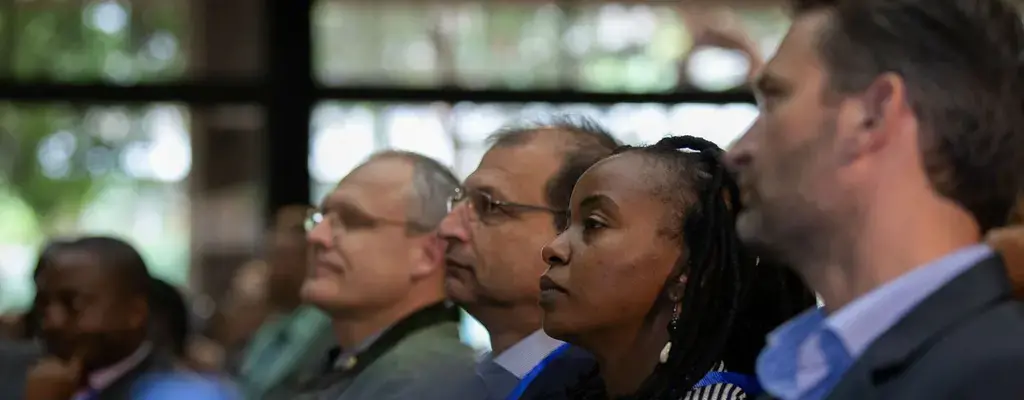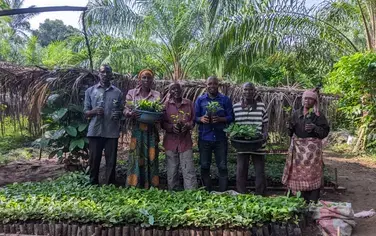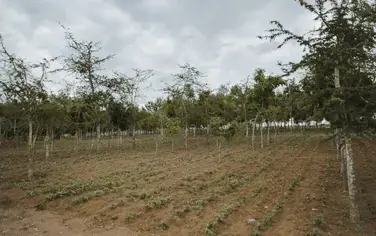This post originally appeared on Landscape News here.
By Julie Mollins
NAIROBI (Landscape News) — The rehabilitation of degraded forests and wooded, productive landscapes is a key component of a global strategy to reduce greenhouse gas emissions and improve livelihoods.
The African Forest Landscape Restoration Initiative (AFR100) was established to feed into a larger “Bonn Challenge” target to restore 350 million hectares of forests worldwide by 2030.
AFR100 sets the stage to restore 100 million hectares of forests throughout Africa within the same timeframe. While country-level commitments are growing, various challenges to achieving goals exist, said delegates attending the Global Landscapes Forum (GLF) conference in Nairobi last week.
Restoration work can support the agriculture and food system by providing jobs and other economic benefits for rural communities, said Stefan Schmitz, deputy director-general and commissioner of Germany’s Federal Ministry for Economic Cooperation and Development (BMZ) One World – No Hunger Initiative.
“The more we succeed in providing employment and income for local communities, the more it’s likely that we’ll be able to succeed in our restoration efforts,” he said. “It will require a mix of national, international, private and public funding.”
Under, the AFR100 initiative — a central part of the BMZ forest action plan — 27 countries have committed to restore 96.4 million hectares of forests, Schmitz said.
“Good governance is a prerequisite for sustainable rural development,” Schmitz said, adding that challenges posed by competing sectors must be met to ensure targets can be met.
“There is, on the one hand, the sphere of landscapes, of natural resources, of restoration,” he said. “On the other, there is the agriculture and food system, and the challenge is to really bring those two universes together.”
BMZ launched AFR100 in collaboration with the New Economic Partnership for Africa’s Development, the World Bank and World Resources Institute at the 2015 GLF conference in Paris.
“We have the targets in place, and the commitment to these targets, and now we have to start the real implementation on the ground,” Schmitz said. “AFR100 is for me, sustainable development in practice.”
The African Union’s Elvis Tangem, coordinator of the Great Green Wall initiative to reforest a wide belt around the Sahel to slow desertification, said successful restoration will be achieved through coordination, synergy and collaborative work.
“On behalf of the AU, I reconfirm our commitment to AFR100, it is something we’re proud of,” he added.
Bob Kazungo, Uganda’s AFR100 focal point, and Kebede Yimam, Ethiopia’s state minister for environment, forest and climate change, also restated their country level commitments, describing some of the financial and logistical challenges they are currently troubleshooting.
KENYAN COMMITMENTS
AFR100 targets were also discussed by a delegation from the Kenya Forest Service at GLF Nairobi in the context of extensive restoration work underway in the Mau Forest Complex, which contributes to Kenya’s 5.1 million hectare AFR100 target.
“In a very short time we saw results from this intervention,” said Jerome Mwanzia, explaining how livelihood benefits were introduced through tree planting, agroforestry, livestock and beekeeping initiatives to incorporate income-generating activities.
“We had small animals colonizing the area,” he said. “The animals were coming back — this ecosystem was regenerated.”
Despite recent successes in the Mau Forest catchment area — which feeds major water systems in four districts, flowing into various lakes, including Nakuru and Victoria — hurdles remain to meet the full AFR100 pledge, delegates said.
“Financing is going to be a major determinant as to whether we achieve targets — and the issue of community buy in,” said Alfred Gichu, who manages the country’s forest service climate change program, landscape restoration initiative and the REDD+ (Reducing Emissions from Deforestation and forest Degradation) program.
“I’ve been extremely inspired just to see the momentum of the commitments that continue to rise,” said Wanjira Mathai, chair of the Wangari Maathai Foundation (WMF), during the AFR100 side event.
Mathai carries on the legacy of her mother, a Nobel Peace Prize laureate who founded the Green Belt Movement (GBM), which led to millions of trees planted in Kenya and throughout Africa.
“I think it’s a real achievement that the momentum on pledges alone has been so impressive, but I also anticipate the next phase — moving from planning to implementation,” Mathai said. “For me that the most important of all is that the local communities are involved in the restoration movement. This is achievable.”




